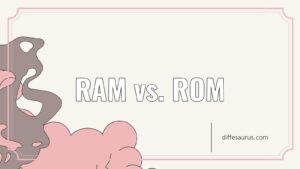The main difference between competitive and noncompetitive inhibition is the binding of the inhibitor to the active site of the enzyme.
The main difference between competitive and noncompetitive inhibition is the binding of the inhibitor to the active site of the enzyme. The binding to the active site can be done by competitive and non-competitive drugs.
What is the difference between competitive and noncompetitive inhibition quizlet?
The active site of the enzyme is bound to an inhibition.
What is the difference between competitive and noncompetitive enzyme inhibition?
Molecules compete with each other for binding to the active site of the enzyme in both competitive and noncompetitive inhibition. One of the differences between competitive and noncompetitive inhibition is this.
What is common in non-competitive inhibition?
Direct binding to the active site is one of the ways in which non-competitive inhibition can be accomplished. It is different from competitive inhibition in that the binding of the inhibitor prevents product formation for a limited time.
What is an example of a competitive inhibitor?
The antineoplastic drug methotrexate is an example of a competitive inhibitors. The structure of methamphetamine is similar to that of folic acid. It prevents the regeneration of dihydrofolate from tetrahydrofolate by blocking the dihydrofolate reductase. It blocks cell division in cancer cells by interfering with the synthesis of DNA.

How can you tell if an enzyme is inhibitor is competitive or noncompetitive?
Noncompetitive inhibition is a type of allosteric regulation characterized by an inhibition binding to an allosteric site. The inhibitor binding at the allosteric site is independent of the binding of the substrates. This activity distinguishes between noncompetitive inhibition and uncompetitive inhibition, in which the inhibition only affects the enzyme-substrate complex. The decrease in activity is not related to the concentration of the substrate. The maximal rate of the catalyzed reaction is reduced by noncompetitive inhibition.
Do competitive inhibitors have similar structures?
Competitive inhibition occurs when the same molecule that bind to the active site is unable to bind to the actual site. Penicillin is a competitive inhibitor that blocks the active site of anidase that manybacteria use to build their cell.
How can you tell if an inhibitor is competitive or noncompetitive?
The reaction isn’t going to proceed if the inhibitor is present. If we’re talking about allosteric or non-allosteric competitive inhibition, only one of the two substances is going to bind.
Which is the best example of non-competitive inhibition?
The final step in the glycolytic pathway is the pyruvate kinase. When adequate amounts of end-product are present, the inhibition of pyruvate kinase allows cells to shut off the breakdown of glucose. The first step in the process of lysis is the hexokinase. If a lot of glucose has already been broken down in the glycolytic pathway, a potent noncompetitive inhibitor of hexokinase can shut off the process. There are many pathways that are regulated by non competitive inhibition.

Is non-competitive inhibition and allosteric inhibition the same?
The maximum rate of catalyzed reaction is reduced in non-competitive inhibition while the Vmax remains the same.



